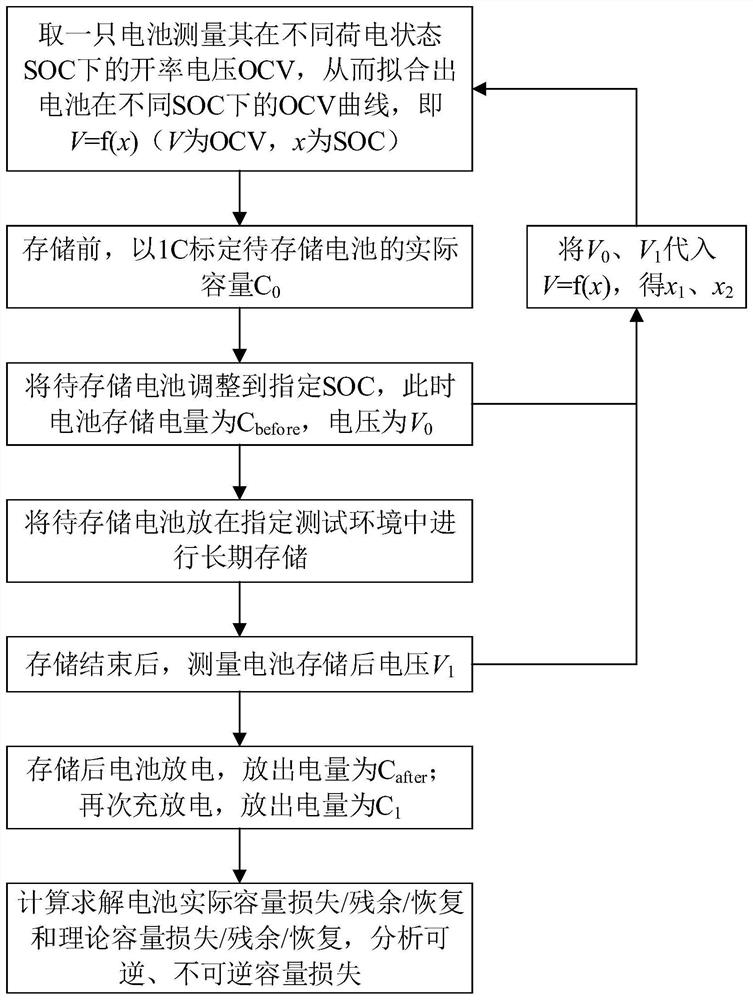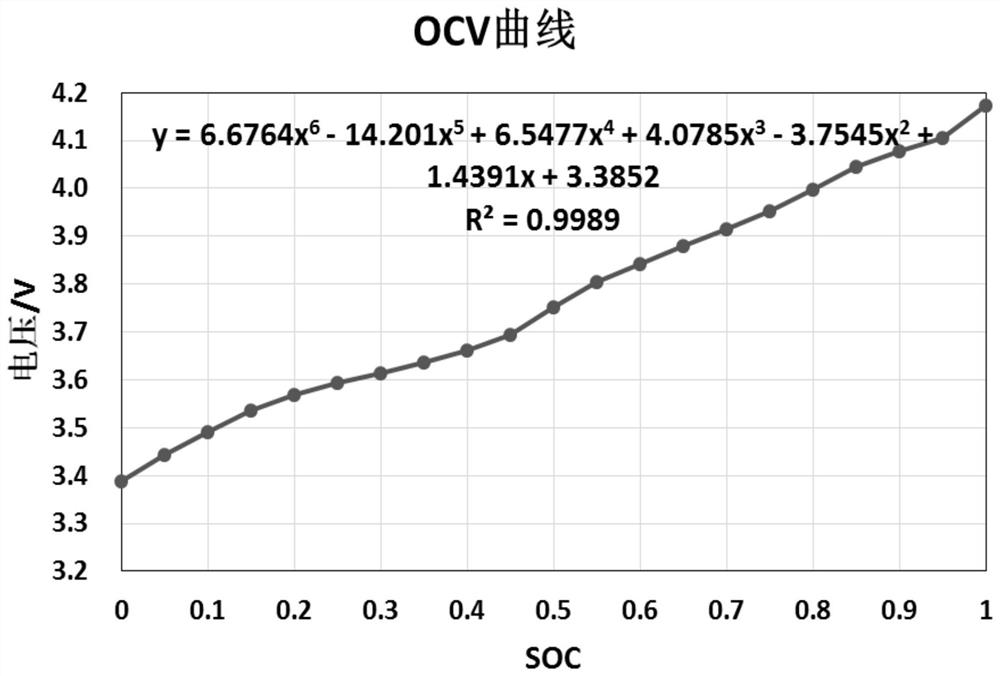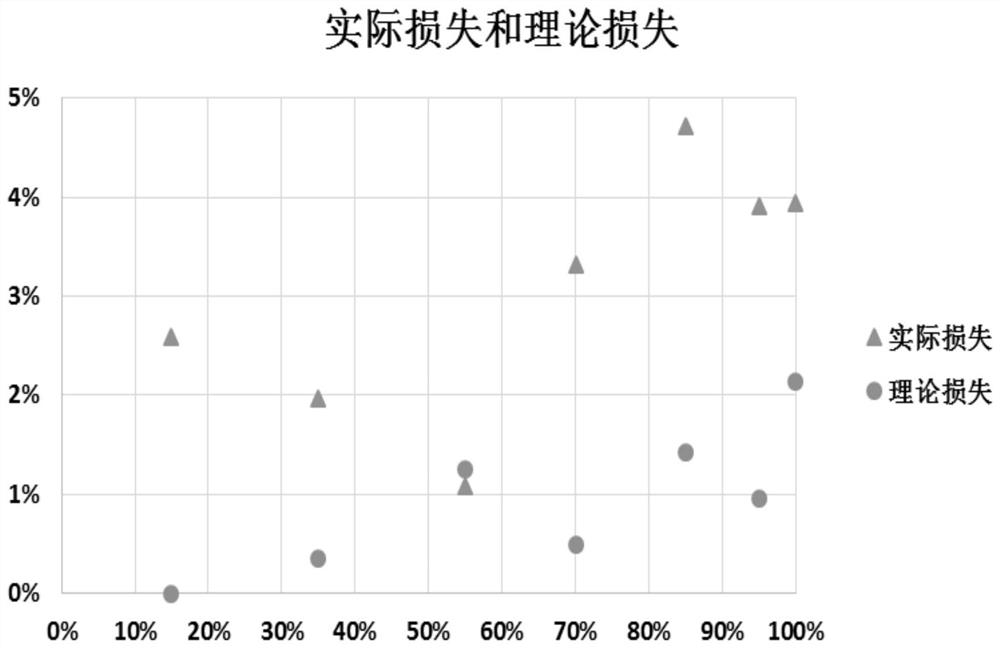A method for assessing capacity loss during storage of lithium-ion batteries
A lithium-ion battery, capacity loss technology, applied in the field of electrochemistry, can solve the problem of lack of effective judgment of capacity attenuation, and achieve the effect of saving test cost, high accuracy, and prolonging the service life
- Summary
- Abstract
- Description
- Claims
- Application Information
AI Technical Summary
Problems solved by technology
Method used
Image
Examples
Embodiment
[0057] see Figure 2 to Figure 5 As shown, for a square lithium-ion power battery (rated capacity is 51Ah), the battery needs to be implemented figure 1 The various steps in , are performed to assess capacity loss during its storage.
Embodiment approach
[0058] Concrete implementation scheme is as follows:
[0059] The first step is to take a battery and measure its OCV (open circuit voltage, Open circuit voltage) under different SOC (state of charge), so as to fit the OCV curve of the battery under different SOC (such as figure 2 ),which is
[0060] V=6.6764x 6 -14.2010x 5 +6.5744x 4 +4.0785x 3 -3.7545x 2 +1.4391x+3.3852 (7)
[0061] (Where V is the open circuit voltage, x is the state of charge);
[0062] The second step is to take 7 batteries for storage, and charge and discharge the batteries to be stored according to the current of 51A to calibrate the actual capacity C before storage. 0-1 , C 0-2 ,...,C 0-7 ;
[0063] The third step is to adjust the 7 batteries to be stored to 15%, 35%, 55%, 70%, 85%, 95%, and 100% SOC respectively. At this time, the battery storage capacity is C before-1 , C before-2 ,...,C before-7 , the voltage V was measured after sufficient static 0-1 , V 0-2 ,...,V 0-7 ;
[0064] ...
PUM
 Login to View More
Login to View More Abstract
Description
Claims
Application Information
 Login to View More
Login to View More - R&D
- Intellectual Property
- Life Sciences
- Materials
- Tech Scout
- Unparalleled Data Quality
- Higher Quality Content
- 60% Fewer Hallucinations
Browse by: Latest US Patents, China's latest patents, Technical Efficacy Thesaurus, Application Domain, Technology Topic, Popular Technical Reports.
© 2025 PatSnap. All rights reserved.Legal|Privacy policy|Modern Slavery Act Transparency Statement|Sitemap|About US| Contact US: help@patsnap.com



